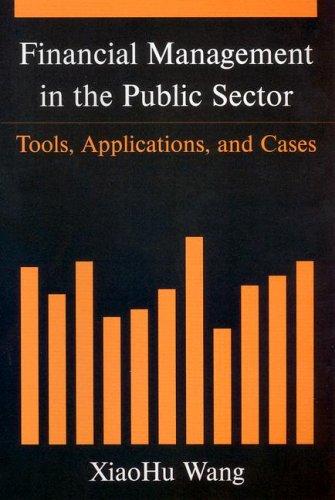Answered step by step
Verified Expert Solution
Question
1 Approved Answer
Barfly Inc. manufactures and markets a line of non - alcoholic mixers sold to restaurants and bars. Barfly s Creative Bartender has recently experimented with
Barfly Inc. manufactures and markets a line of nonalcoholic mixers sold to restaurants and bars. Barflys Creative Bartender has recently experimented with making alcoholic versions with the intention of bottling and marketing these directly to the public through appropriate retail outlets. Prior spending on R&D was $ million and Barfly anticipates spending half of that again during the first year of the project to conclude R&D for total R&D of $ million The cost of building the manufacturing line is estimated at $
Marketing projects revenues from the new product line will be units in the first year, growth in years and at growth in year at and for year While Barfly anticipates the product will have a longer life than years, their initial projections are for a year time horizon, fully depreciating the cost of plant and equipment over that time on a straightline basis.
Revenue per unit is projected to be $ in the first year, with prices rising by per year thereafter. COGS are projected to be of revenues, SG&A of revenues, and the companys marginal tax rate is Net working capital required for the project is expected to be of revenues annually once the project is fully online in year
Barflys balance sheet includes $ in total capital, of which $ is debt. The market yield to maturity on debt is the risk free rate on a year Treasury is and the market risk premium is The companys beta is and the CFO uses the CAPM to estimate cost of equity.
What is the projects NPV
What is the projects IRR?
Should the project be accepted?
Management has been studying the companys capital structure and is considering using a small secondary offering of stock to pay down debt. The following data is used to determine the cost of debt under varying capital structures.
Debt ratio Spread to Treasuries Yield on Debt
If Barfly issues $ in new equity and uses the proceeds to repurchase and defease existing debt, what would the resulting weighted average cost of capital be
Should management move towards this capital structure? Why or why not?
Step by Step Solution
There are 3 Steps involved in it
Step: 1

Get Instant Access to Expert-Tailored Solutions
See step-by-step solutions with expert insights and AI powered tools for academic success
Step: 2

Step: 3

Ace Your Homework with AI
Get the answers you need in no time with our AI-driven, step-by-step assistance
Get Started


